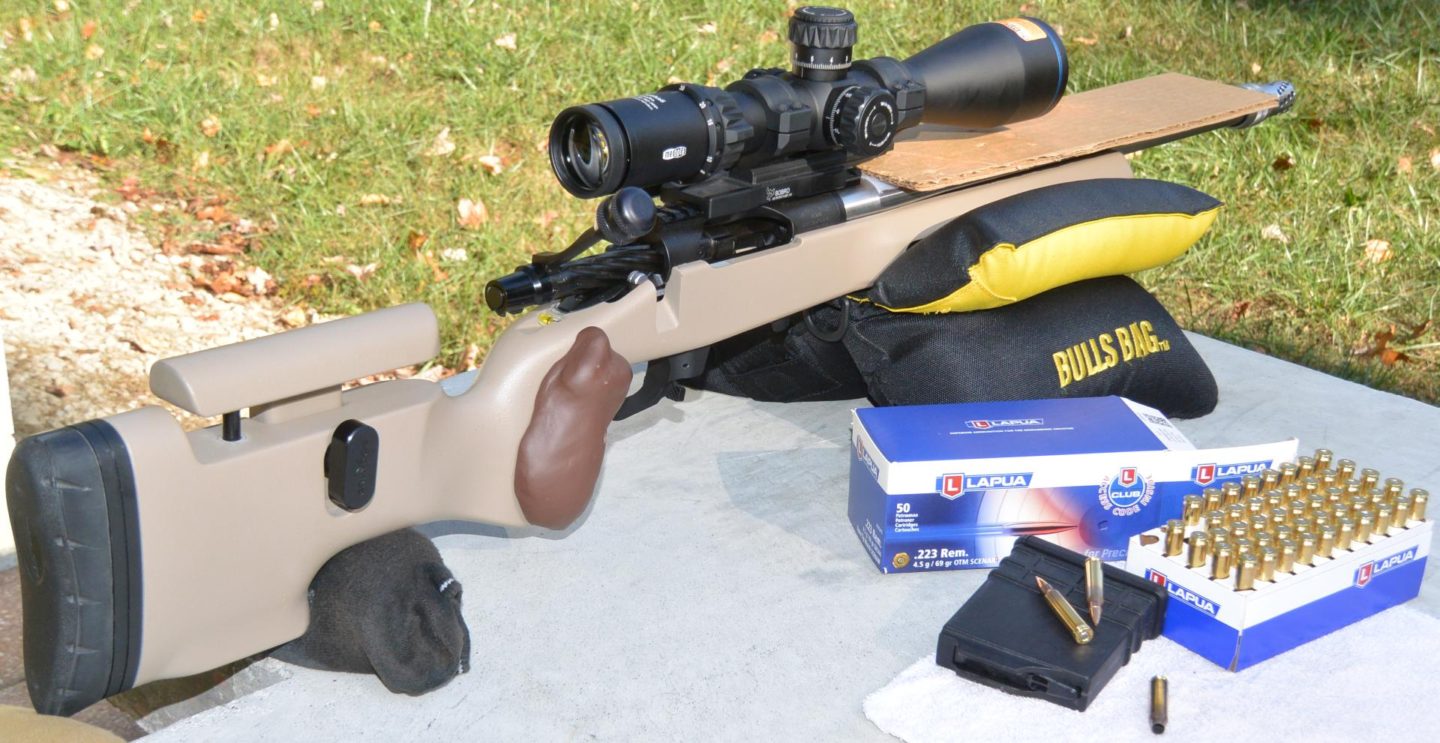The shooter’s view behind the Meopta Optika6 5-30×56 RD FFP scope

Table of Contents:
– Background
– Unboxing and Physical Description
– Reticle
– Comparative Optical Evaluation
– Mechanical Testing and Turret Discussion:
– Summary and Conclusion
– Testing Methodology
Background:
Meopta is an optics manufacturer located in the Czech Republic. They represent what is probably the most vertically integrated of all sports optics brands. Most scope brands do not actually have any manufacturing facilities beyond warranty repair. Those that do manufacture usually purchase coated glass and often some sub-assemblies as well. Meopta manufactures all the way down to coating and grinding glass. A great deal of their business is done in this OEM capacity, producing parts and sub-assemblies not just for sport optics,but also for a wide variety of other industries, such as medical and aerospace. The first Meopta product I ever used was one of these OEM’d products. The very popular, though now discontinued, original Zeiss Conquest series of scopes were made by Meopta and continue to live on in Meopta’s lineup as the Meopta Meopro scopes.
Like many overseas manufacturers, Meopta has had difficulty with regard to both marketing their products and deciding what features to make for U.S. consumption. Their brand awareness has also been downright terrible. Some of this is understandable, as they were formerly in the Soviet sphere of influence and so were not seen in western markets until after the dissolution of the Warsaw Pact. Much of it has just been lack of good branding, or appreciation of brand value. In the past few years this has changed some. A lot of this has to do with an advanced U.S. based optical coatings company that Meopta acquired a few years ago. The company came with some U.S. based employees who thought like U.S. shooters and changed the thinking within Meopta to a degree. This group also developed the technology behind the Dichro reticles featured on many of the Optika6 designs, though not the example I am testing.
The Optika6 line therefore is a big departure from previous Meopta offerings in that it includes a lot of ffp designs, mil/mil configurations, zero stops, throw levers, and some reticle designs from ILya.
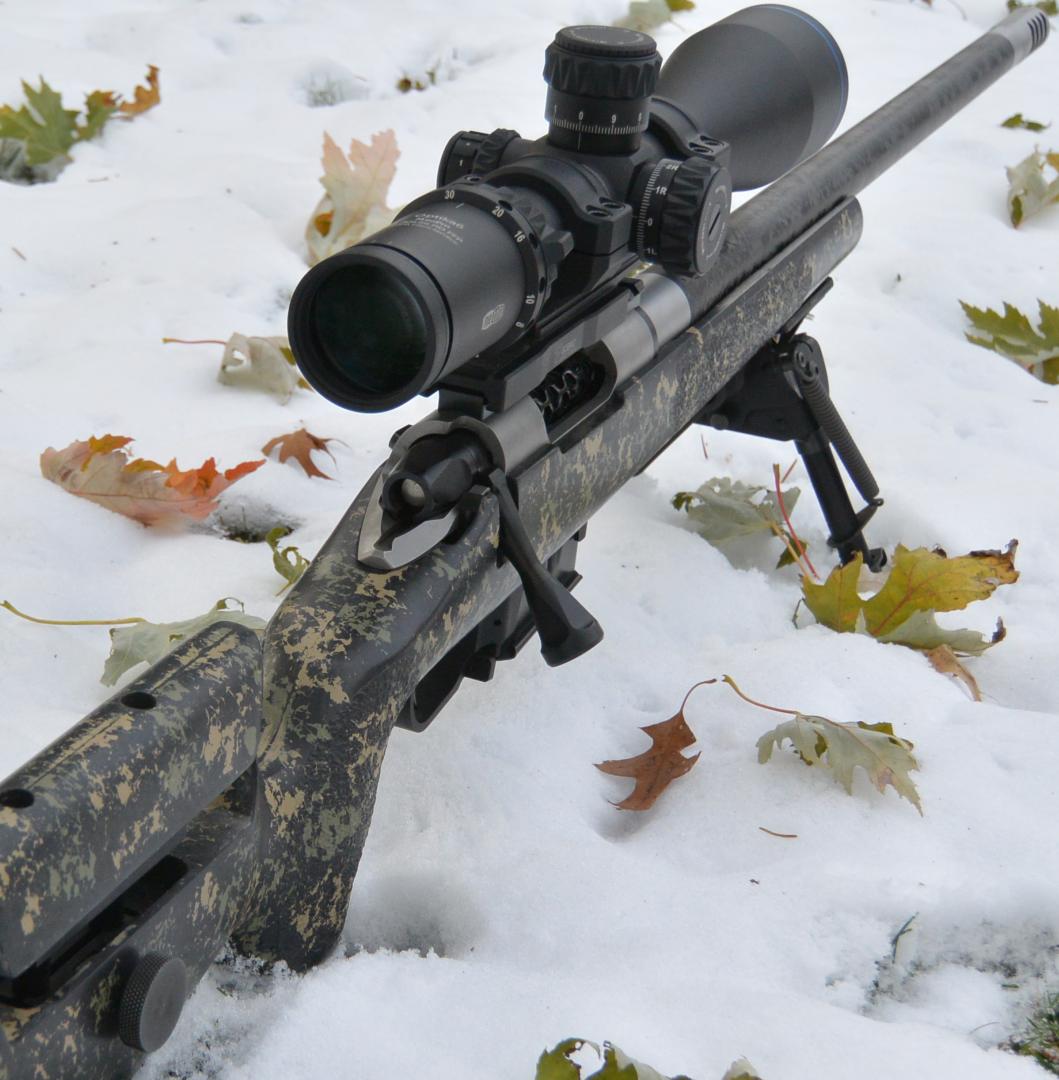
Unboxing and Physical Description:
The Meopta MeoPro Optika6 5-30×56 RD FFP comes with a nice scope bra, lens cloth, battery, sticker, hex wrench, some spare screws, and a detachable throw lever that threads into the power change ring. There is also a manual, but it is not particularly useful. It has some stats on the scope’s specifications, but it’s directions on use are quite minimal and difficult to follow. I find the Optika6 to be an attractive scope. I am not sure exactly what makes some scopes attractive and others less so, or if there is any universality to what people find good looking in a scope or not. This one looks good to me though. I would describe it as having a softened tactical appearance. This is both figurative and literal in that the knurling on all the controls is rubber and so will not try to strip the flesh from your hands. The stiffness of each knob (paralax, power, diopter, and illumination) is right on. We will discuss elevation and windage adjustments later. Being a 30x 56mm optic with 34mm tube, it is pretty large. It weighs in at 38oz and is 15.4″ long.
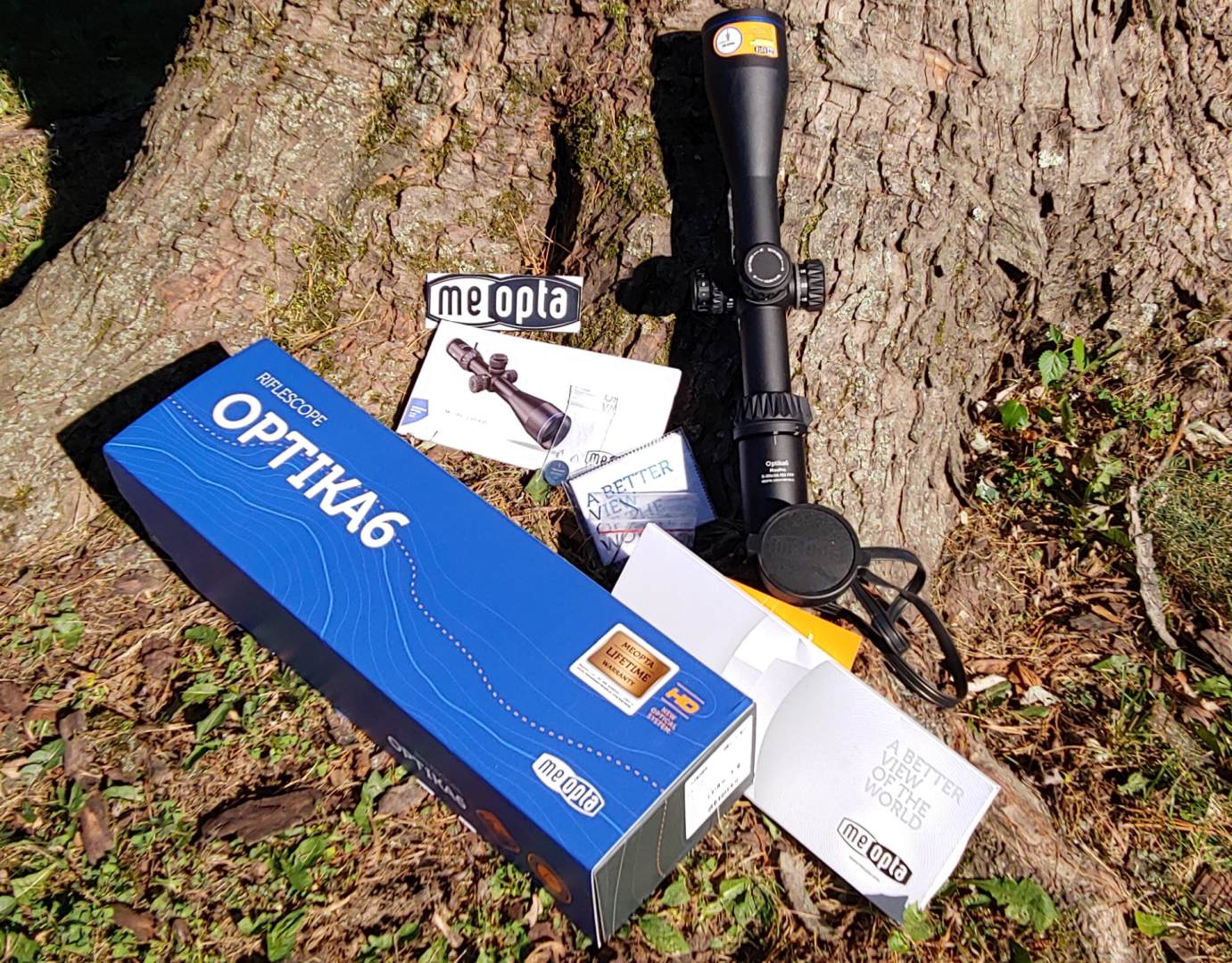
Reticle:
The Meopta Optika6 line comes in several different reticle options. For the 5-30×56, these include a plex reticle, generic BDC with dichro elements, .308 drop reticle, and ILya’s MRAD RD. It is a pity the MRAD RD does not have any dichro on it, as I would have liked to try that concept out. That is secondary though. Having a reticle that can hit at range is the important thing, and the MRAD RD is by far the best option for that.
ILya’s MRAD RD reticle follows the general trend of .2mil graduated, floating dot center, Christmas tree reticles, but with a few distinctions. The first such distinction is that it only has only 1 mil of graduations in the 12 o’clock sector. I like the open top section as it gives you some space to observe a target area through with no obstructions. The second departure ILya has from the norm is that he does less funny business with graduation increments. Pretty much all the graduations are .2 mil increments and there are .2mil graduations in all sectors of the reticle, including the center. Many other scopes keep changing things up. This causes more mental overhead and more mistakes. I never found myself second guessing what a marking was on ILya’s reticle and that is really the goal. Lastly, the line widths used for the graduations and crosshairs on ILya’s reticle are significantly smaller than the average. I’m a fan of finer graduations so I will take it. This leaves the reticle very fine indeed at 5x, but at 5x you’re really only using the scope for observation anyway, so I don’t see a problem with maximizing the reticles use for 15x and greater.
This brings us to the Christmas tree section. At first I was a big proponent of Christmas tree sections. The concept appealed to me because I really like more utility in a reticle. I thought that trees would make for faster measurement of shot correction, give you a faster way to make corrections in a pinch, and extend your total drop compensation range. In practice though, I have experienced less gain than I expected in these areas, and found a big trade off when it comes to seeing splash. Even when using a reticle with a tree section, I have continued to find it more accurate to measure for shot correction by moving the reticle to get read outs at right angles. Using the tree is both less accurate (big vertical gaps) and only works if your miss lands in the tree section. Not shooting strictly timed competitions (or ones that specifically contrive to disallow adjustment of the scope on some sections) I have found no speed advantage. Finally, most scopes now have adjustment range sufficient to any distance that I am confident of hitting at anyway. I really don’t do more than 15mils in drop ever and virtually every scope will give you that on the elevation turret. So, I have become uncertain as to whether or not I want a tree section at all and very certain that if I have one it should be minimal. The section in the MRAD RD is very thin but does have a lot of measurements. There are dots every .2mils and also dots at the .5mil increments between lines. For me it does interfere some in my ability to see splash. Less tree is desired. In testing, the reticle showed only the smallest deviation from correct dimensions. It starts a little larger than correct and then at about 8 mils crosses back to be very slightly smaller. At no point is it off more than .02 mils. That is to say, it is very good. The reticle is canted only very slightly relative to the adjustments, .03 mils in 10 mils of adjustment, in the counter-clockwise direction. This is also pretty good and of a small enough magnitude that it should not cause any problems.
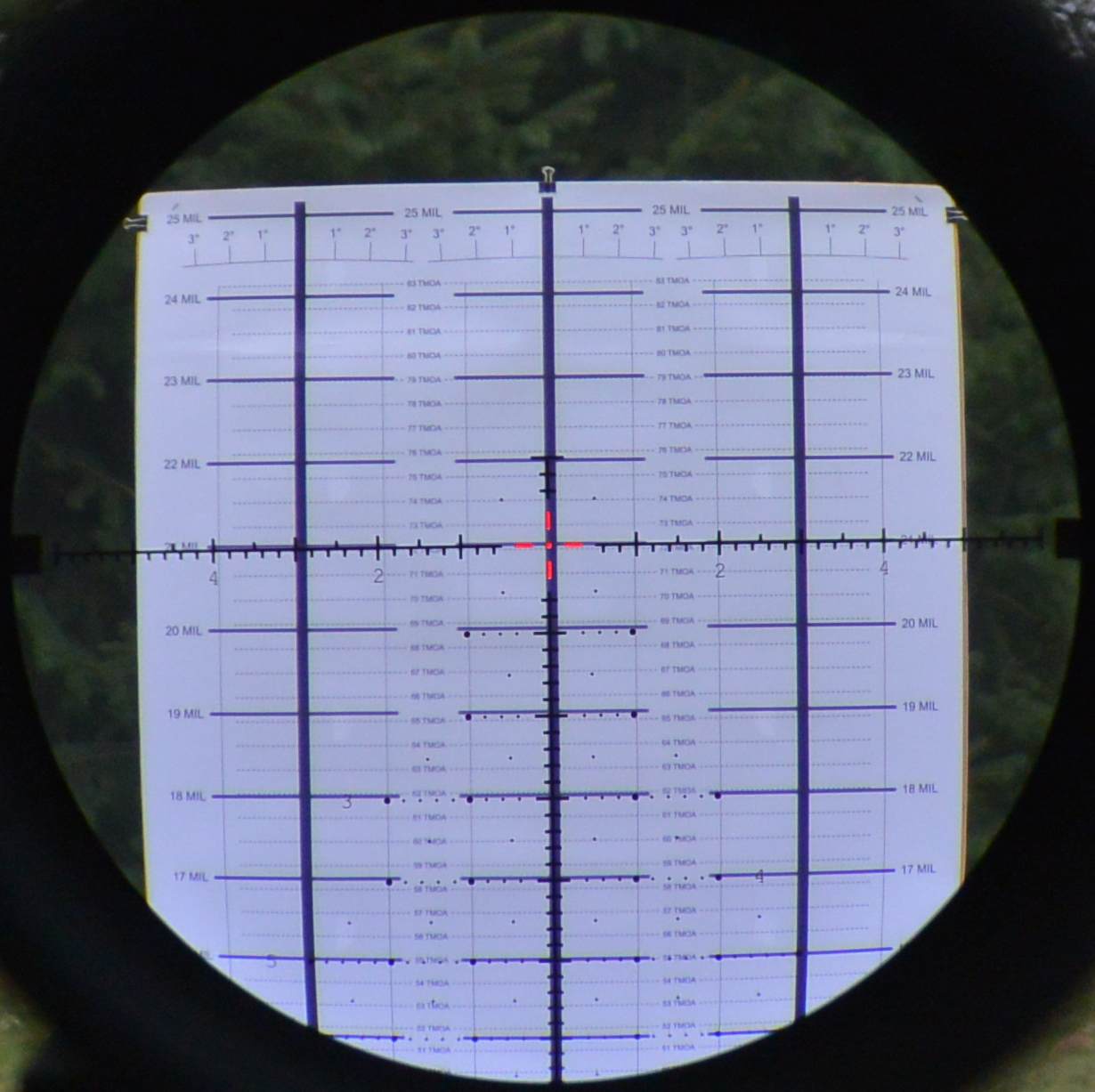
Comparative Optical Evaluation:
This review of the Meopta MeoPro Optika6 5-30×56 RD FFP is part of an ongoing series of sub $1k FFP mil/mil precision rifle scope reviews. These scopes are used as the optical comparison scopes for each other. In order of arrival, they are the: Sightron SIIISS624x50LRFFP/MH, Athlon Ares BTR 4.5-27×50 FFP IR Mil, Athlon Midas TAC 6-24×50, Athlon Midas TAC 5-25×56, Sightron S-TAC 4-20x50FFPZSIRMH, and Nikon Black FX1000 6-24x50SF Matte IL FX-MRAD. For testing, these scopes were lined up together on a 5 slot adjustable v-block and evaluated using the procedure outlined in the methodology section at the end of this review. This same methodology is used on all long range scope evaluations and has been for several years now. Lastly, the Nikon had some issues necessitating its return. At the time of this review’s publication, its replacement has not arrived.
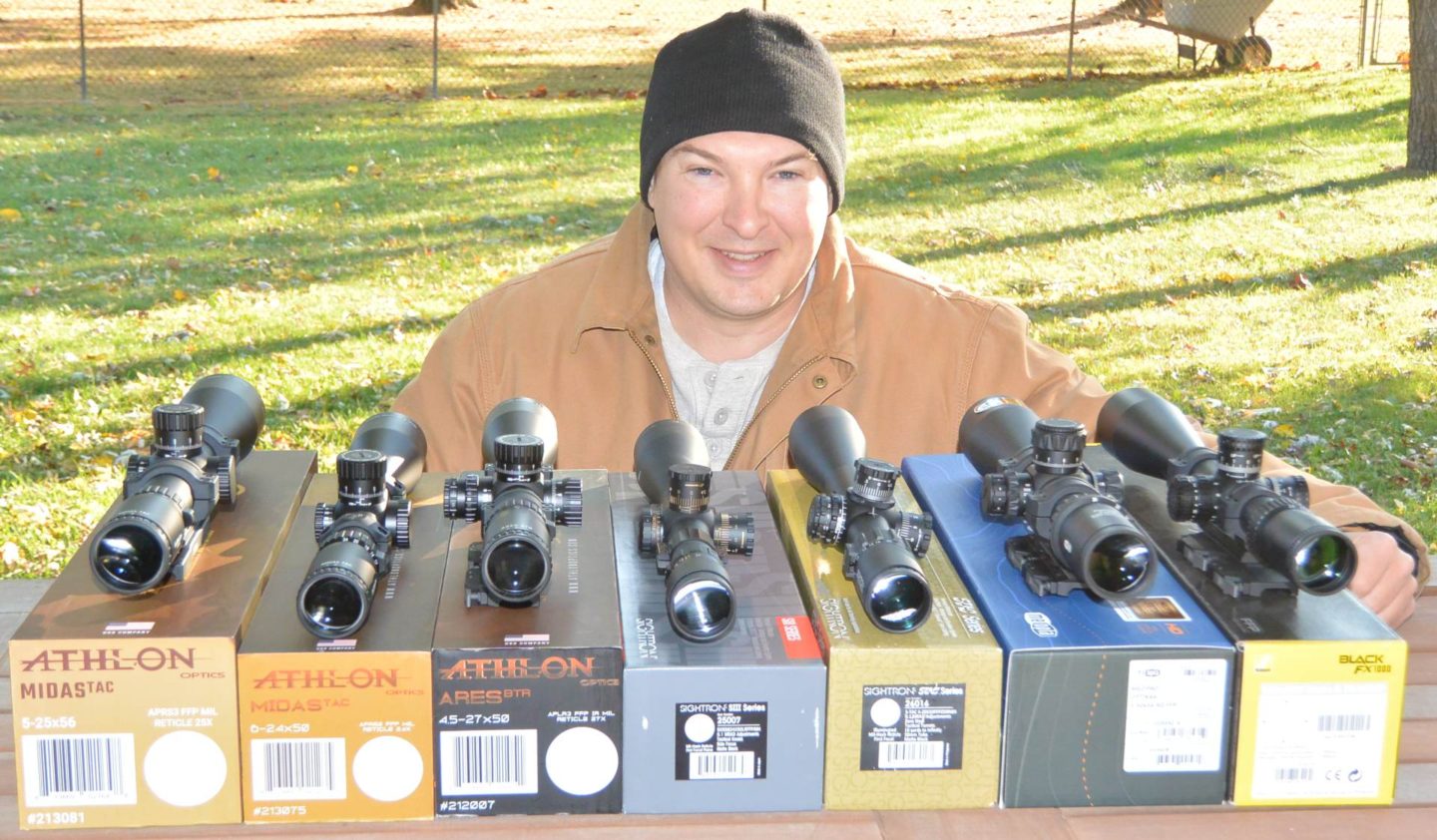
The Meopta MeoPro Optika6 5-30×56 RD FFP was optically the most interesting of all the Sub $1k ffp optics I have tested. The reason for this is that it was the most unpredictable with regards to how it would perform on any one specific attribute. For an example, we will start off with resolution. The Meopta was significantly better than all the other sub $1k scopes with regards to resolution. It was good enough I actually broke out a USO SN3 3.2-17×44 I was testing for my uncle to test it beside the Meopta just in case. That probably wasn’t necessary. The answer was no, the sub $1k Meopta Optika6 is not competitive with the USO that had been well over twice the price. It does, however, lead all other sub $1k scopes tested in resolution. On the flip side, it is by far the worst at handling stray light. It should have come with a sunshade. If you buy this scope, buy a sunshade and you will be a much happier person. This stray light issue was a pain for me as both my principle shooting range, and my optical comparison area are south facing and anytime any direct sunlight landed on that objective from any angle it significantly degraded performance. It actually took a while to figure out exactly what was going down as the stray light would sometimes show up as the typical hazy look, but other times things just looked out of focus or showed as very telltale blooms.
Resolution and stray light were what I would call the two bookends of the optical performance of this scope. Following that pattern, The Meopta’s depth of field was the best in the group but its eyebox was the worst. In practice, at the range, the eyebox was perfectly functional, I actually had mistakenly thought it would prove to be roomy when compared to others. However, shorn of the stabilizing adjustable cheek piece of my rifle, it proved the smallest. On field of view, the Meopta had one of the largest, but it also had close to the most pronounced barrel distortion. The Meopta again led the field with very minimal chromatic aberration but was only average when it came to contrast. Despite having one of the few larger 56mm objectives in the lineup, the Meopta was only average in low light performance. What to make of a scope so often at the extremes? I think a couple things are notable. First, though the Meopta did spend a lot of time at both the top and bottom of the lineup, it spent more at the top than the bottom. Second, it tended to land near the top on the most important aspects of performance, these being resolution and field of view. Its worst showing, easily stray light handling, is also easily remedied with a sunshade. So, on balance I would say it performs better than average optically for the price, provided you have a sunshade on it.
Mechanical Testing and Turret Discussion:
First we will start by talking about the unique the Optika6 has. The elevation pulls up to adjust and pushes down to lock. Oddly, the windage is neither capped nor locking. The zero adjusts on both knobs with the removal of a single screw in the center of the elevation adjustment and then removal and repositioning of the outer sleeve. Meopta has made this single screw easily removable without tools for the elevation knob which is nice. The windage knob’s requires a coin or screwdriver. The zero stop on the Optika6 scopes is a unique system. I have illustrated how to change it in the illustration below. You will note that, due to its unique cog-based system, use of the zero stop system will limit the maximum elevation range to a little less than three full revolutions. This comes out to somewhere around 28 mils total travel, which is a lot. You also may feel the zero stop cog as you rotate past it moving to your 2nd and 3rd revolutions. It feels sort of like a loose mechanical part. In fact, the first time I felt it I thought something felt loose and broken. Eventually, I realized what it was and that it is not an issue. Really, it is a pretty clever zero stop system and solves the difficulty that adding the locking mechanism to the elevation knob created for making a zero stop system.
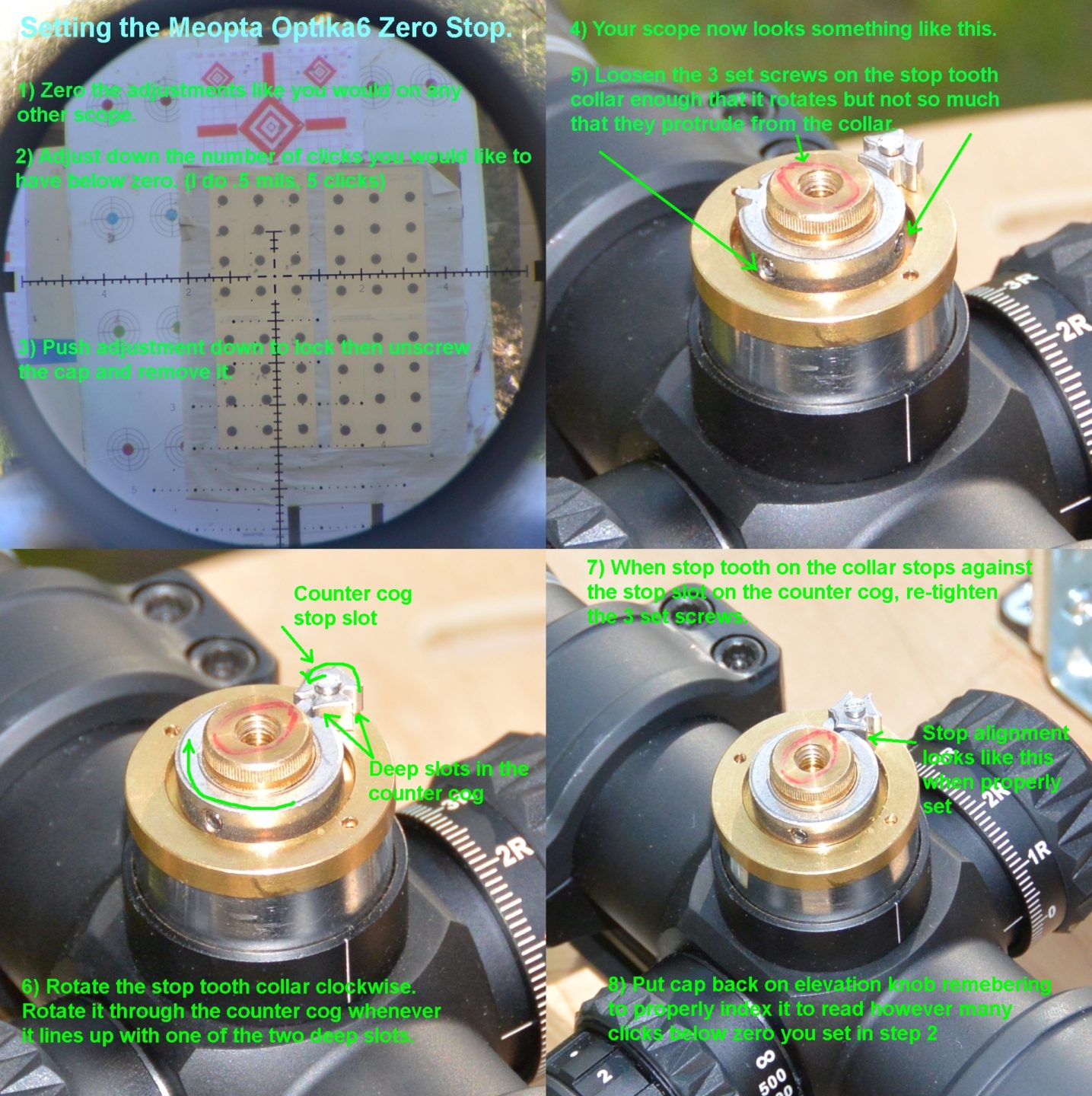
Here is where I will talk about the feel of the clicks in the adjustments. Most people are just wrong about clicks. Everybody seems to say they like firm, stressed out, super positive clicks and not squishy ones. This really comes down to saying you want almost all the resistance to motion in the knob to come from the click detent itself and not something else, usually an o-ring. I used to think this might just be a matter of taste, but it is not. Most people are just wrong in their preferences, and here is why. This is not about the tactile sensation of handling your knob and wanting it firm and positive. This is about counting the clicks as you adjust, not miscounting, and not having to break position to look up and check that the knob is on the correct number. If the turrets are the very “clicky” variety, best characterized by the S&B MTC turrets, you will often experience clicks that you miss. This is because it takes a lot of force to move the turret over the first detent, but between the first and second it takes almost no force. So, your turning pretty hard and the turret skips though several detents quickly enough that you don’t feel them all. The Meopta Optika6 is not near as bad as the S&B MTC in this regard but I did experience some miscounted clicks on it and had to break position to look up at the knob on it. This is something you very easily note when you are assessing the tracking on a humbler device but might actually fail to notice in the field, leading you mistakenly attributing a missed shot to another cause. I mention all of this because people will like the feel of these turrets. They will say things like, ‘they feel very positive and adjust with a pleasing amount of force’. Perhaps Meopta has done them just right for the market. It certainly doesn’t pay to tell your customers they are wrong and people seem to like “clicky” feeling turrets. My thoughts are that I miscounted clicks on these very nice feeling turrets and I never miscount on nasty, squishy feeling ones.
Now on to the tracking. The first thing to note in the tracking of the Meopta is that there is some slop due to the locking turret design. Internally, there is some sort of spline sleeve that allows the outer part of the adjustment mechanism to raise and lower to lock and unlock whereas the inner portion contains the adjustment threading. In this design, the outer portion also contains the click detents. As such, it is the outer portion that you can both see and feel. You cannot see or feel that there is just a little movement in that spline sleeve joint. The effect of this is that there is about .07 mils of slop in the system. So you might adjust up 6.0 mils on the knob and have the reticle at 6.0 mils on target. Then, you reverse and go down to 5.9 mils on the knob but your reticle will be at 5.97, having moved only .03 mils because of the slop. So, whenever you are adjusting up, your adjustments will always read .07 mils higher than when you’re adjusting back. This is a bit annoying, mostly because it means that whenever you reverse direction for a shot adjustment, you get less magnitude of adjustment than you think. I understand this is a common behavior for locking turret designs. The windage, which does not lock, does not display this behavior.
Now for the tracking. Going up from optical zero, the scope tracked clean to 6.0 mils. At that point it starts to loose little by little. At 13.9 mils on the adjustments the scope has optically moved 14.0 mils. It adjusts a total of 15.7 mils up from optical zero. Of course, going back it is +.07 mils reticle position at each knob reading.
Going down from optical zero, the adjustments go to 18.0 mils. Going down they actually look good at that 10 mils but, of course, when you reverse and go back up, the .07 mil slop now makes it look like you’re a click off.
Overall, this means that the adjustments are quite well calibrated, notwithstanding the .07 mil of slop you have because of the locking turret. They are never off by more than .1 mil from what they read. The scope shows a 33.7 mils total elevation adjustment, but remember that the use of the zero stop will limit you to a maximum of about 28 mils.
Going left to right on the windage turret that does not have the locking feature, you notice no slop. It adjusts cleanly for the 4 mils each way I have on the target and has a total range of 17.0 mils right from center and 17.3 mils left.
Testing for lash in the parallax adjustment of scopes is not one of my regular procedures but I noticed it while shooting with this scope so I have fully investigated. For those who don’t know, lash in the parallax knob refers to when there is enough slop in linkage inside the scope that adjusts for parallax that it can noticeably shift position under recoil. Important to this is that the movement will only occur if you adjusted one way (typically coming up to your distance from minimum focus distance) and not the other (coming down to your distance from infinity focus distance.) This is because the slop basically represents the internals shifting from one side of their adjustment channel to the other. If they start on the side they would be shifting to, they have nowhere to go. On this Meopta, if you focus up from min distance to your range you will notice that after a number of rounds fired you have gone from zero reticle movement with head bob to about .06 mil of movement because the parallax has shifted a little. There is no shift if you adjusted from infinity down to your range.
To round out the mechanical testing of the Meopta, no reticle shift occurred with change in power, diopter adjustment, or parallax adjustment. So, all good on those tests. I would say there is a trend to all of the mechanical observations on the Meopta Optika6. That trend is that the mechanisms were all calibrated and working properly but there was a little bit of play in them. Realistically, this is not going to effect the use of the scope for long range shooting or hunting. You won’t fire enough rounds at the same range to move the parallax even if it was adjusted the direction that has a little slop. Similarly, the slop in the elevation adjustment due to the locking feature never causes things to be more than .1 mil off. The only way you will notice the slop in these adjustments is if you are testing it on a humbler apparatus such as I did or are shooting many rounds at the same distance.
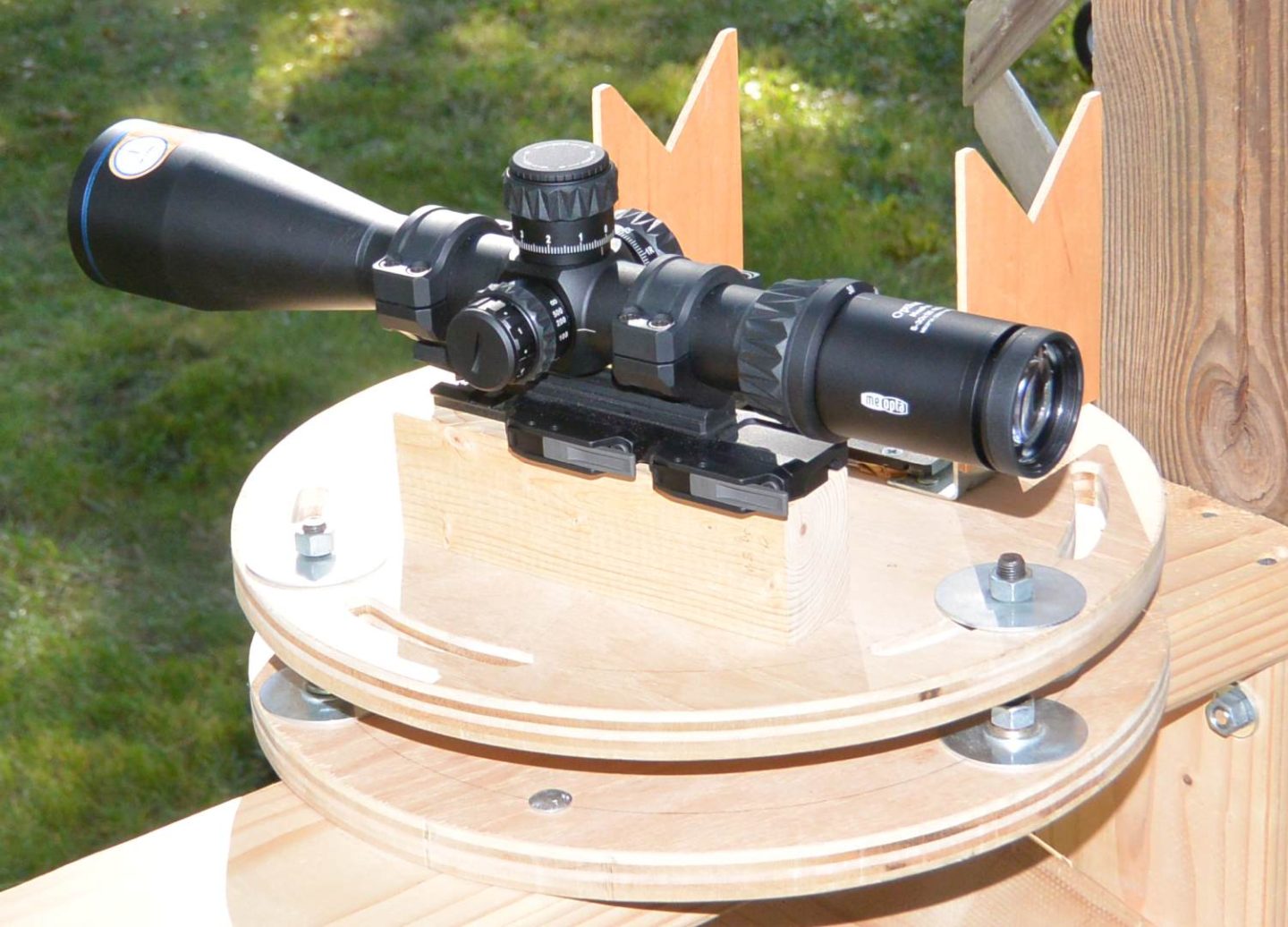
Summary and Conclusion:
At time of press the Meopta MeoPro Optika6 5-30×56 RD FFP is sitting at about $899 from the various online retailers. It is a very feature rich optic at that price, having illumination, a locking elevation turret (though, oddly, not windage) zero stop, and a detachable throw lever. On balance, it is the most feature rich optic tested in this sub $1k series. You can have it in a variety of reticle configurations, as well as with MOA instead of mil adjustments, but I think will be most popular in mil/mil with ILya’s MRAD RD reticle, which is a credit to the scope. This scope can also feature Meopta’s unique Dichro reticle technology but does not currently come with this technology in a reticle I would be interested in (a good mil one).
Optically, the Optika6 5-30×56 RD FFP is the least predictable performer in the lineup, as often landing best or worst in the test lineup than anywhere in between. On balance, it tends to do better on more important aspects of performance such as resolution and worse on less important ones such as barrel distortion. However, it really requires a sunshade in most conditions to function well and should have included one. I will note here that at the time of my writing, the sunshade for the 56mm Optika6 is not yet available and the 56mm MeoStar shade will not fit. In the end, I would say the Meopta Optika 6 performed above the average of its peers optically, but more in a Brett Favre way than a Peyton Manning one.
Mechanically, the Optika6 5-30×56 RD FFP can be best characterized as sound and properly calibrated but with some slop in the system. Both the elevation adjustment and the parallax adjustment have this slop, which essentially means they behave just slightly differently when adjusted one direction relative to when they are adjusted the other. In the case of the parallax that means it can show a little lash when adjusted from minimum focus distance to our target distance. In the case of the elevation knob you will note about a .07 mil difference at each increment depending on whether you adjusted up to that increment or down. The Meopta MeoPro Optika6 5-30×56 RD FFP really leaves its potential buyer with a lot to think about because so often it excels or lags in such dramatic ways. On balance, though, it excels more than it lags and I think that Meopta will find this first substantial incursion into scopes with precision long range features a rewarding one.
Here is Your Pro and Con Breakdown:
Pros:
– Feature rich, 10mil/turn, Zero Stop, Illumination, Locking elevation, Detachable throw lever
– ILya’s MRAD RD reticle
– Better than average optical performance especially with regard to resolution
– Large adjustment range
– Tracking and reticle are properly calibrated
– Attractive appearance
– Good warranty and reputation
Cons:
– Really needs a sunshade but does not come with one
– Noticeable slop in both elevation adjustment and parallax
– Though better than average overall, the optical performance does have some significant low points
– The larger, 56mm objective is not translating to better low light performance or a larger eyebox
– Complicated zero stop system not well explained by poor manual
